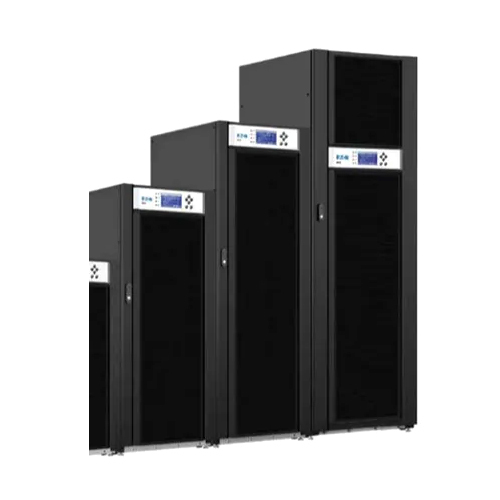Have you ever wondered what exactly UPS W2S means and how it could impact your logistics game? Well, buckle up because we're diving deep into this topic, and trust me, it’s worth your time. Whether you're a small business owner or just someone trying to understand the logistics lingo, this guide will break it all down for you. We’ll explore the ins and outs of UPS W2S, its benefits, and why it matters in today’s fast-paced world.
First things first, UPS W2S is not just another acronym thrown around in the shipping world. It stands for "Warehouse to Store" and represents a crucial part of supply chain management. Think of it as the invisible thread that connects warehouses to retail stores, ensuring products reach their destinations on time and in perfect condition. In an era where customers expect lightning-fast delivery, understanding UPS W2S can give you a competitive edge.
Before we dive deeper, let’s set the stage. The logistics industry has undergone massive transformations over the years. From traditional shipping methods to cutting-edge technology, the way goods are transported has evolved significantly. UPS W2S is a game-changer in this space, and by the end of this article, you'll understand why it's become indispensable for businesses of all sizes.
Read also:Drake Bell Fled To Mexico The Untold Story Behind The Headlines
What Exactly is UPS W2S?
Let’s start with the basics. UPS W2S refers to the process of moving inventory from warehouses to retail stores. This might sound simple, but it involves a complex network of operations, including inventory management, transportation, and last-mile delivery. The goal is to streamline the supply chain, reduce costs, and improve customer satisfaction. In today’s market, where every second counts, having a robust W2S strategy can make all the difference.
For example, imagine a retailer running out of stock during peak shopping seasons. Without an efficient W2S system, replenishing those shelves can take days or even weeks, leading to lost sales and dissatisfied customers. That’s where UPS steps in, offering tailored solutions to ensure stores are always stocked and ready to meet demand.
Why Does UPS W2S Matter?
In today’s competitive landscape, businesses need more than just a delivery service. They need a partner who understands their unique challenges and can provide innovative solutions. UPS W2S does exactly that. By focusing on optimizing the warehouse-to-store process, businesses can:
- Reduce transportation costs
- Improve inventory accuracy
- Enhance delivery speed
- Increase customer satisfaction
These benefits might seem straightforward, but their impact on a business’s bottom line is significant. For instance, faster delivery times can lead to higher customer retention rates, while accurate inventory management can prevent overstocking or stockouts.
How Does UPS W2S Work?
Now that we’ve established the importance of UPS W2S, let’s break down how it actually works. The process begins with inventory management, where products are stored in strategically located warehouses. From there, UPS uses advanced algorithms to determine the most efficient routes for transporting goods to retail stores. This involves considering factors like distance, traffic patterns, and delivery windows.
Once the routes are planned, UPS deploys its fleet of vehicles to transport the goods. This might include trucks, planes, or even drones in some cases. The final step is last-mile delivery, where products are delivered directly to stores, ensuring they’re ready for customers to purchase.
Read also:Ocean World Adventure Park Dominican Republic Your Ultimate Guide To Marine Adventures
Key Components of UPS W2S
Let’s take a closer look at the key components that make UPS W2S so effective:
- Inventory Management: Ensuring the right products are in the right place at the right time.
- Transportation Optimization: Planning the most efficient routes to minimize costs and delivery times.
- Last-Mile Delivery: Getting products from distribution centers to retail stores seamlessly.
Each of these components plays a vital role in the overall success of the W2S process. Without them, the supply chain would be disjointed and inefficient.
The Benefits of UPS W2S
So, what makes UPS W2S such a game-changer? Here are some of the key benefits:
Cost Efficiency: By optimizing transportation routes and reducing idle time, businesses can significantly cut down on logistics costs. This translates to higher profit margins and more resources to invest in other areas of the business.
Improved Accuracy: With advanced tracking and monitoring systems, UPS ensures that inventory levels are always accurate. This reduces the risk of overstocking or stockouts, which can be costly mistakes.
Enhanced Customer Experience: Faster delivery times and well-stocked shelves lead to happier customers. And happy customers are more likely to return, boosting sales and brand loyalty.
Challenges in Implementing UPS W2S
While UPS W2S offers numerous benefits, implementing it isn’t without its challenges. Some common obstacles include:
- Technological Barriers: Not all businesses have the resources to invest in advanced logistics technology.
- Supply Chain Complexity: Managing multiple warehouses and stores can be overwhelming without the right systems in place.
- Regulatory Compliance: Ensuring all operations adhere to local and international regulations can be a daunting task.
However, with the right partner and tools, these challenges can be overcome. UPS offers comprehensive solutions to help businesses navigate these complexities and achieve their logistics goals.
Overcoming Technological Barriers
One of the biggest hurdles in implementing UPS W2S is the technological aspect. Many small and medium-sized businesses lack the resources to invest in cutting-edge logistics technology. But here’s the good news: UPS offers scalable solutions that cater to businesses of all sizes. From basic tracking systems to advanced analytics tools, there’s something for everyone.
For instance, UPS’s My Choice® service allows businesses to monitor and control their shipments in real-time. This gives them greater visibility and control over their supply chain, helping them make informed decisions.
Data and Statistics Supporting UPS W2S
Let’s talk numbers. According to a report by McKinsey, companies that implement advanced logistics solutions like UPS W2S see an average cost reduction of 10-20%. Additionally, a survey conducted by UPS revealed that 75% of consumers are more likely to shop at stores that offer fast and reliable delivery options.
These statistics highlight the tangible benefits of investing in UPS W2S. By improving efficiency and customer satisfaction, businesses can achieve significant growth and success.
Real-Life Examples of UPS W2S in Action
To better understand the impact of UPS W2S, let’s look at some real-life examples:
Example 1: A national retailer implemented UPS W2S to streamline its supply chain. As a result, they reduced transportation costs by 15% and improved delivery times by 20%. This led to increased customer satisfaction and higher sales figures.
Example 2: A small online store struggled with stockouts during peak seasons. By partnering with UPS and implementing W2S solutions, they were able to maintain optimal inventory levels and meet customer demand consistently.
These examples demonstrate the practical applications and benefits of UPS W2S in real-world scenarios.
How Small Businesses Can Leverage UPS W2S
Small businesses often face unique challenges when it comes to logistics. Limited resources and budget constraints can make it difficult to implement advanced solutions like UPS W2S. However, with the right approach, even small businesses can leverage these tools to their advantage.
One effective strategy is to start small and scale up gradually. Begin by implementing basic tracking and monitoring systems, then gradually invest in more advanced tools as your business grows. This allows you to maximize the benefits of UPS W2S without breaking the bank.
Future Trends in UPS W2S
As technology continues to evolve, so does the world of logistics. Here are some future trends to watch out for in the realm of UPS W2S:
- Automation: The use of automated systems to streamline warehouse and transportation operations.
- Artificial Intelligence: AI-driven analytics to predict demand and optimize inventory levels.
- Sustainability: Increasing focus on eco-friendly logistics solutions to reduce carbon footprints.
These trends promise to further enhance the efficiency and effectiveness of UPS W2S, making it an even more valuable tool for businesses in the future.
Conclusion
As we wrap up this guide, it’s clear that UPS W2S is a powerful tool that can transform the way businesses manage their supply chains. From reducing costs to improving customer satisfaction, the benefits are undeniable. By understanding and implementing UPS W2S, businesses can gain a competitive edge in today’s fast-paced market.
So, what’s next? If you’re ready to take your logistics game to the next level, consider partnering with UPS. Their comprehensive solutions and expert support can help you achieve your goals and drive success. Don’t forget to share your thoughts in the comments below or explore other articles on our site for more insights into the world of logistics.
Table of Contents
- What Exactly is UPS W2S?
- Why Does UPS W2S Matter?
- How Does UPS W2S Work?
- Key Components of UPS W2S
- The Benefits of UPS W2S
- Challenges in Implementing UPS W2S
- Overcoming Technological Barriers
- Data and Statistics Supporting UPS W2S
- Real-Life Examples of UPS W2S in Action
- How Small Businesses Can Leverage UPS W2S
- Future Trends in UPS W2S


